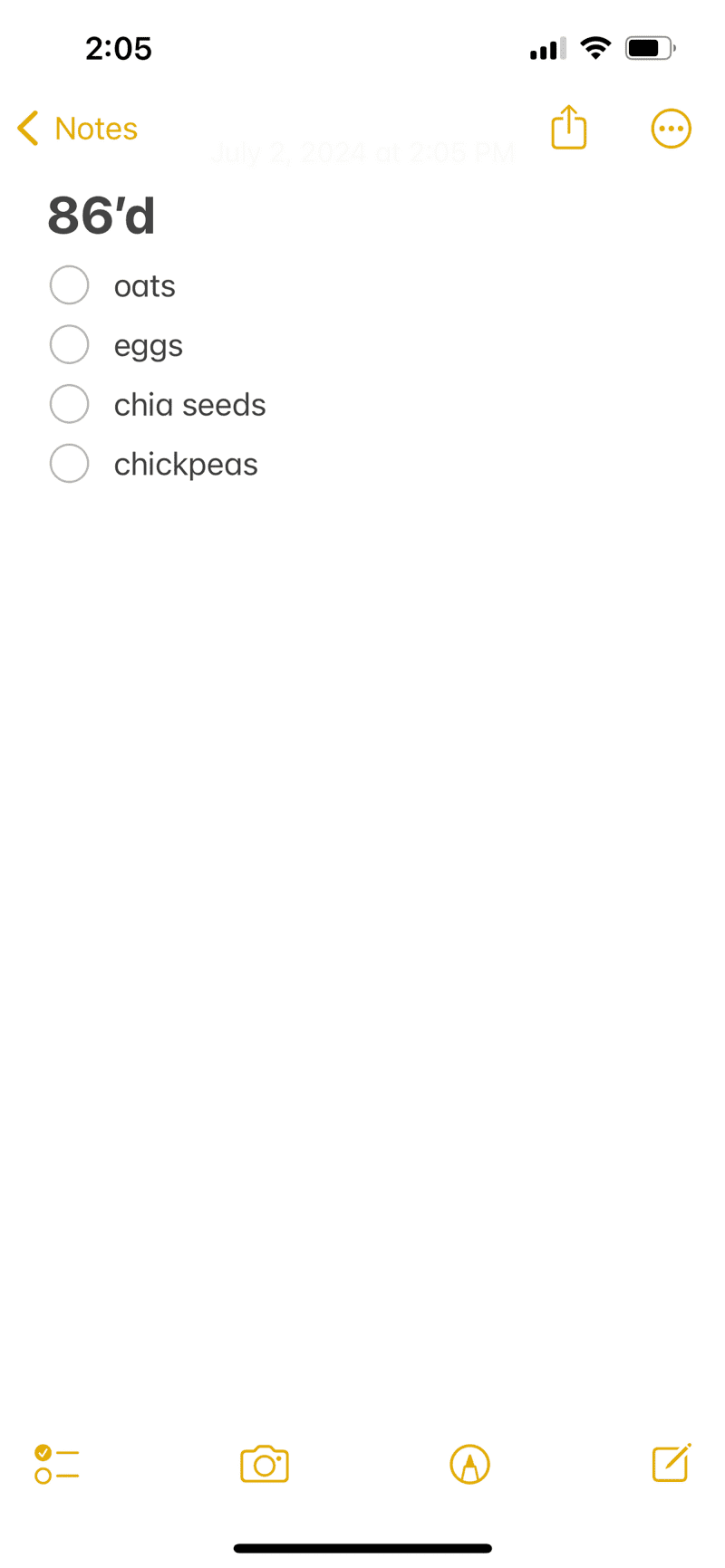If you’ve watched The Bear, worked in a restaurant, or pretended that you’re on a fast-paced cooking show while making dinner in your home (I’ve done all three), you’ve likely heard the term “86” before. As in, “86 beef Wellington,” meaning the kitchen has run out or is running low on a certain dish, and they’ve got to stop serving it for the night.
When I was a waitress, I dreaded hearing the phrase because that meant the next time someone ordered the menu item in question, I’d have to tell them they couldn’t have it (which they did not love to hear). But now I’ve found a way to use the 86 list to my advantage, by integrating it into my grocery shopping strategy. Here’s what it is and how it helps.
What Does It Mean to 86 Something?
To 86 something means to temporarily strike it from the menu, as the dish or a major ingredient in it has run out for the time being. While there’s no one conclusive answer to its origins, one story points to a prohibition-era speakeasy in Greenwich Village located at 86 Bedford Street; when the police came to the unmarked door, people might’ve been told to “86,” or make themselves scarce.
There are plenty of other theories, from the number of ladles it takes to empty a pot of soup to the standard height of a door (8 feet by 6 inches) that a rude customer would leave through.

How I Use the 86 List Method for Grocery Shopping
Wherever the term came from, it’s been stuck in my mind since I first heard it years ago. Now I keep my own list of 86’d grocery staples. The method is simple: I keep the list in the Notes app on my phone, and I go into the settings to “pin” it to the top of all my notes, so it’s never hard to find.
Then, whenever I run out or notice I’m about to use the last of an ingredient I always repurchase, I jot it down in that note. I tend to limit this list to (often pantry) staples I seldom run out of, like oats, peanut butter, or soy sauce — ingredients I use all the time and am always surprised by when I finally eke out the last bit.
The 86 method differs from a regular grocery list because it doesn’t involve things I need to pick up for a specific recipe I’m making that week, or things I’m often running out of, like eggs or fruit. I prefer to keep these rare replacements in their own list for a few reasons. First, when I’m making an actual grocery list, I tend to forget to add the things I don’t usually need to repurchase.
Second, I don’t buy all my staples from the same stores. Oats, for instance, I prefer to get from Trader Joe’s or buy in bulk, rather than the pricey natural market close to my apartment. Having this running list means I can pick these staples up when I’m out and see them for a good price.
This approach also saves me the stress of forgetting, say, chia seeds, while I’m out on a quick grocery run, and the time of having to run back out to the store later. It’s also prevented me from buying duplicates of a certain item on more than one occasion. Once I’ve bought the 86’d item, I simply delete it from the list (although you could also just check it off) until I need to replenish again down the road.
Further Reading
A Travel Warning From an Entomologist: Always Put Your Suitcase in the Hotel Bathroom!
8 Small-Space Shoe Storage Ideas That Are Way Too Clever
I Just Discovered the Smartest Way to Store Paper Towels in Your Kitchen (It’s a Game-Changer!)

